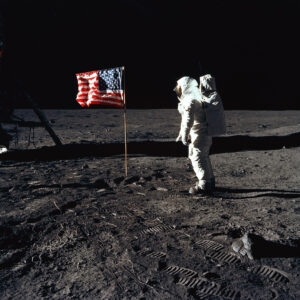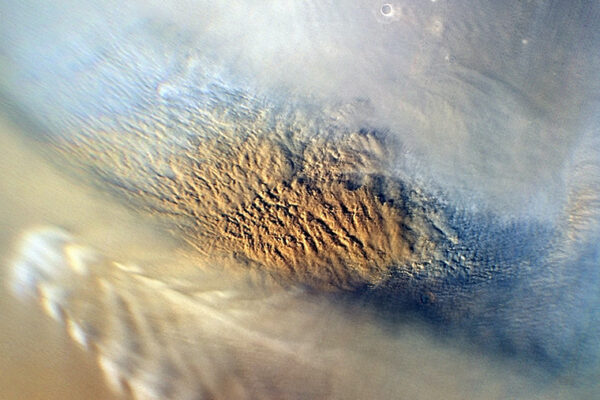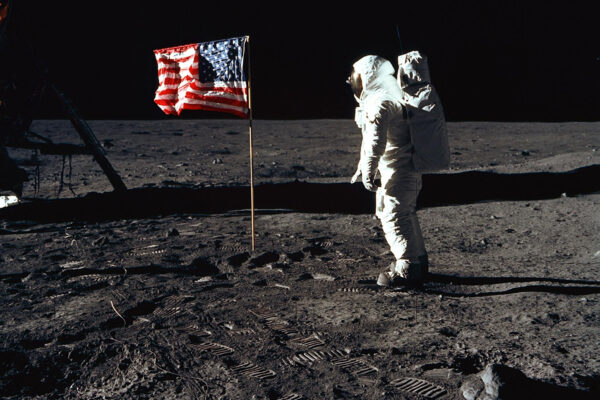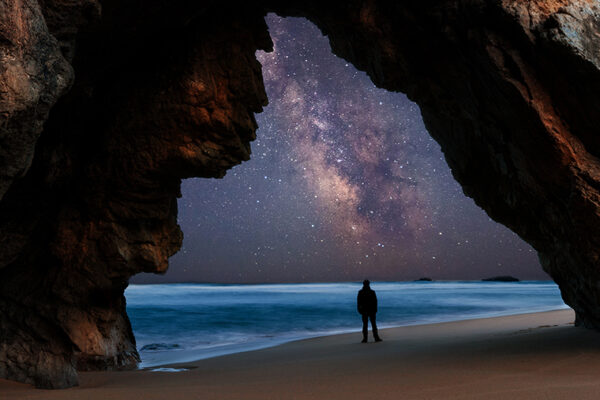
When humans go back to the Moon — and NASA plans to return by 2024 — they’re going to need water. For now, the astronauts expect to bring their own. But future space explorers aim to take advantage of water recently discovered in little-explored regions of the Moon.
The water is stored as ice in shadowy parts at the Moon’s poles. A consortium led by researchers at Washington University in St. Louis will investigate the life cycle of this water and other volatiles on the surface of the Moon. The team is one of NASA’s eight new Solar System Exploration Research Virtual Institutes; the five-year cooperative agreement is valued at more than $7 million.

“One of the big questions we are looking to shed light on is what are the origins and evolution of water on the Moon,” said Jeffrey Gillis-Davis, research associate professor of physics in Arts & Sciences and the principal investigator of the Interdisciplinary Consortium for Evaluating Volatile Origins (ICE Five-O) team.
“Studying the interaction between lunar volatiles and the space environment gives our team the opportunity to test hypotheses regarding the delivery and retention of water and other volatiles on bodies in the inner solar system,” he said.
Researchers on the ICE Five-O team will investigate fundamental questions at the intersection of space science and human space exploration.
For example, NASA is eyeing the water at the Moon’s poles with more than just basic science in mind. If humans are able to successfully mine lunar ice, it could be split into its elemental components — hydrogen and oxygen — and used in fuel for high-energy rockets. Future refueling stations on the Moon could propel explorers to sites all over the inner solar system.
“This project represents a great integration of our analytical and experimental laboratories both in the Earth and Planetary Sciences and Physics departments, as well as our experience in lunar science and other planetary research,” said Brad Jolliff, the Scott Rudolph Professor of Earth and Planetary Sciences in Arts & Sciences and a co-investigator on the project.
Other Washington University co-investigators include Ryan Ogliore, assistant professor of physics, and Alian Wang, research professor of earth and planetary sciences.
In addition to Washington University, the new consortium includes researchers from the University of Hawaii; California State University San Marcos; San Francisco State University; NASA’s Johnson Space Center; the Johns Hopkins Applied Physics Laboratory; the Lunar & Planetary Institute; University of Winnipeg; York University; and the University of Toronto.
Determining the source
In 2017, NASA’s Lunar Reconnaissance Orbiter found new evidence of surface water ice in polar regions of the Moon. Scientists suggest three main hypotheses for the origins and evolution of water and other ices now known to be contained in permanently shadowed regions of the Moon.
The water may have been expelled from volcanoes on the Moon billions of years ago. Or the water and other volatiles may have been delivered to the surface of the Moon by comets and water-rich asteroids. Another theory suggests that the water was formed when oxygen-rich minerals on the lunar surface were buffeted by hydrogen ions streaming from the sun.
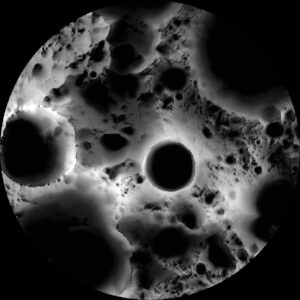
“We want to place some constraints on how the isotopic ‘signatures’ of volatile sources might be modified as molecules traverse across the lunar surface and find their way into permanently shadowed regions,” Gillis-Davis said. “We want to be sure that future measurements can conclusively determine the source or sources of volatiles, when ice chemistry is measured on the lunar surface.”
To do that, the researchers will also study how the harsh space environment alters the surfaces of airless bodies like the Moon, a process called space weathering.
The ICE Five-O grant includes funding for a new state-of the-art space weathering laboratory. Ions streaming from the sun and high-velocity dust-sized particles release huge amounts of energy that transform minerals into glass and can destroy ices, or lead to a variety of chemical processes — for example, transforming molecules of water (H2O) ice and carbon dioxide (CO2) ice to methane ice (CH3). The new space weathering facilities will expand the range of surface conditions that researchers can simulate. These simulations will allow researchers to create conditions like those found at the lunar poles and on other planetary bodies — to see how water, ice and rock are altered when they encounter these conditions.
Collaborators are also developing the protocols and techniques for collecting new space samples that are more likely to contain volatile substances. These protocols are not only important for when humans return to the Moon, but also for other space missions such as those to the surfaces of asteroids. The ICE Five-O team includes NASA sample curation specialists, who are developing new techniques to safely transport, preserve and handle these volatile-rich samples.
“Revealing the source of the Moon’s water can in turn inform us about how the Earth got its water,” Gillis-Davis said. “If we see that the water wasn’t sourced entirely from lunar volcanoes — that it was delivered later — then it would be a strong indicator that Earth’s oceans formed at least in part by water delivered after Earth’s formation, rather than during its accretion in the early solar system.”
The research led by the ICE Five-O team will help guide critical parts of the planning for future manned missions to the Moon.
“ICE Five-O results aim at not only determining the source of lunar water but also enabling an era of sustained exploration, where people live and work on the Moon for extended periods of time,” Gillis-Davis said.
Related video: Washington University scientists on how Apollo 11 launched 50 years of lunar science.
